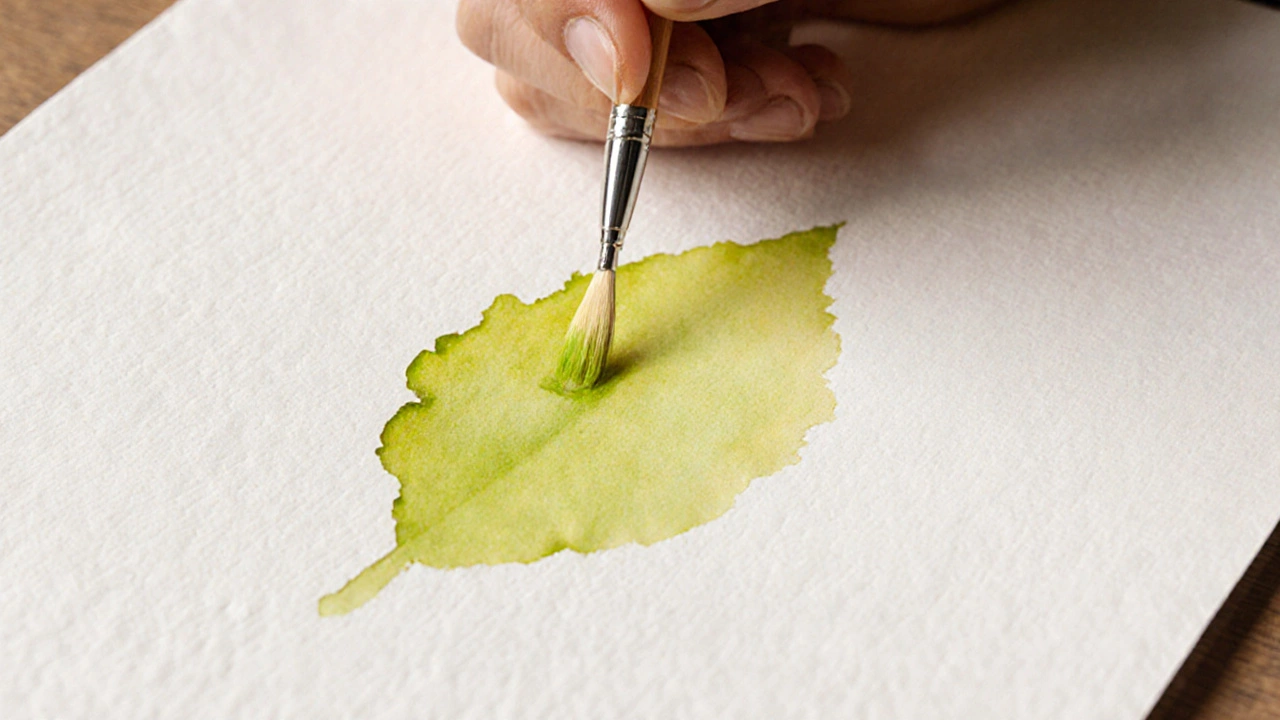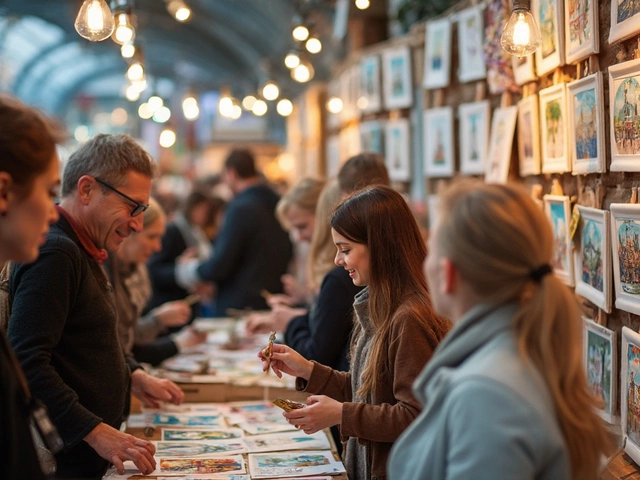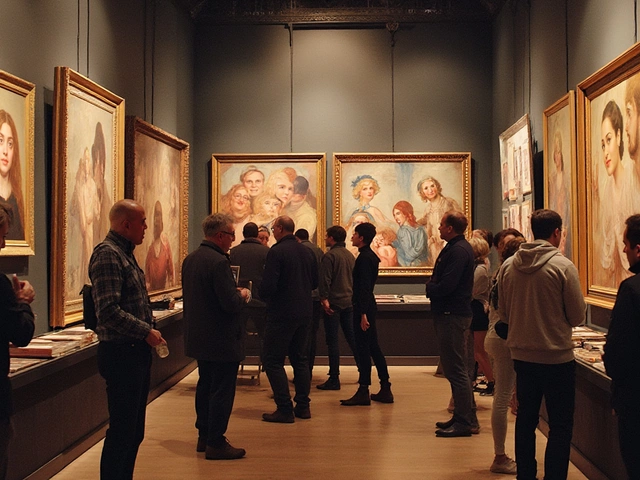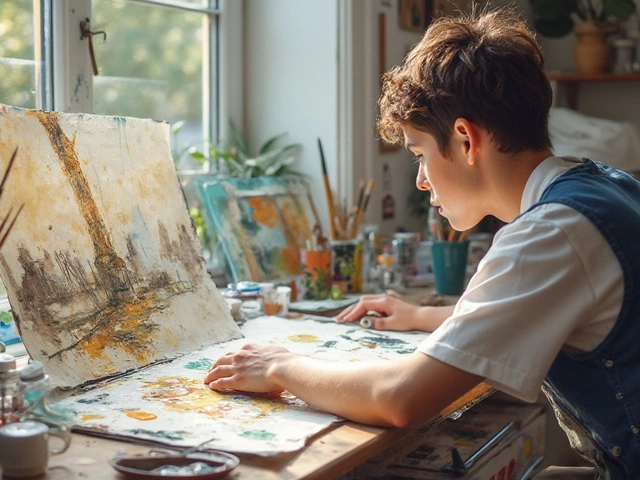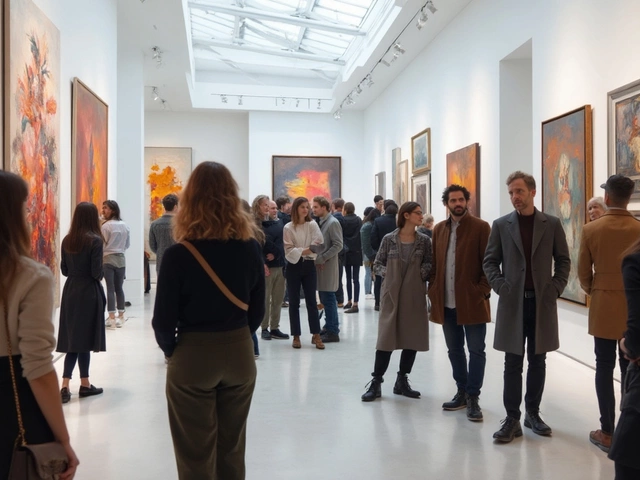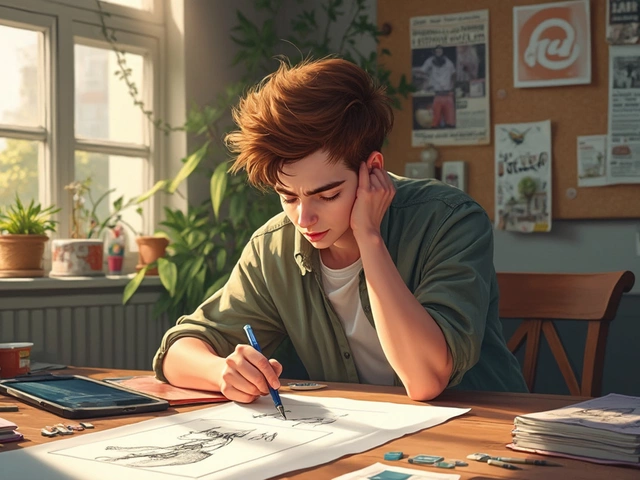Watercolor has a reputation for being delicate, unpredictable, and unforgiving. You paint a sky, wait for it to dry, and then add a tree-only to watch the colors bleed together into a muddy mess. It’s frustrating. And that’s when you start wondering: are you supposed to layer watercolor? The answer isn’t yes or no. It’s more like: how you layer it makes all the difference.
Why Layering Matters in Watercolor
Layering isn’t just a technique-it’s the backbone of watercolor depth. Unlike oils or acrylics, watercolor doesn’t hide what’s underneath. That transparency is its superpower. When you layer correctly, you get luminous shadows, rich greens, complex skin tones, and skies that feel alive. Without layering, your paintings look flat, chalky, or like they were painted with crayons.Think of it like building a sandwich. The first layer is the bread-the base color. The next layer is the cheese-adding warmth or coolness. Then the tomato-fine details. Each layer adds something new without covering up what came before. If you slap everything on at once, you get a soggy mess. Watercolor works the same way.
How Many Layers Is Too Many?
There’s no magic number. Some artists build up 10 or more layers in a single area. Others finish with three. It depends on the pigment, the paper, and the effect you want.Transparent pigments like Quinacridone Gold is a transparent, staining watercolor pigment known for its warm, glowing yellow-orange hue can handle layer after layer without turning muddy. Opaque pigments like Cadmium Red is a semi-opaque, high-pigment watercolor that loses its brilliance when overworked start to look chalky after two or three layers. And if you use a pigment that’s both staining and granulating, like Ultramarine Blue is a deep, granulating blue pigment that settles into paper texture and builds intensity slowly, you can stack layers to create texture and depth without losing clarity.
The real rule? Wait until each layer is fully dry. Not just dry to the touch-completely dry. If you paint over damp paint, you’ll get blooms, hard edges, and unpredictable halos. That’s not a happy accident. That’s a mistake.
The Right Way to Layer: Wet-on-Dry
Wet-on-dry is the most reliable layering method for beginners and pros alike. You paint a layer, let it dry completely (at least 15-30 minutes, sometimes longer), then add the next one.This method gives you control. You can paint sharp edges, define shapes, and gradually build intensity. It’s how you paint a red brick wall: first a light wash of red, then a darker wash for shadows, then a touch of burnt sienna for texture. Each layer stays where you put it.
Pro tip: Use a hairdryer on low heat to speed up drying if you’re in a hurry. Don’t use high heat-it can warp the paper or cause the paint to crack.
When Wet-on-Wet Works (and When It Doesn’t)
Wet-on-wet is beautiful for skies, clouds, and soft transitions. But it’s not for layering. When you paint into a wet area, the colors mix and spread. You can’t control where they go. That’s fine for a sunset-but not for adding a tree branch over a cloud.Some artists use wet-on-wet to lay down a base wash, then wait for it to dry before adding details. That’s layering. But if you try to paint a second layer while the first is still wet, you’re not layering-you’re blending. And blending too much kills the luminosity watercolor is known for.
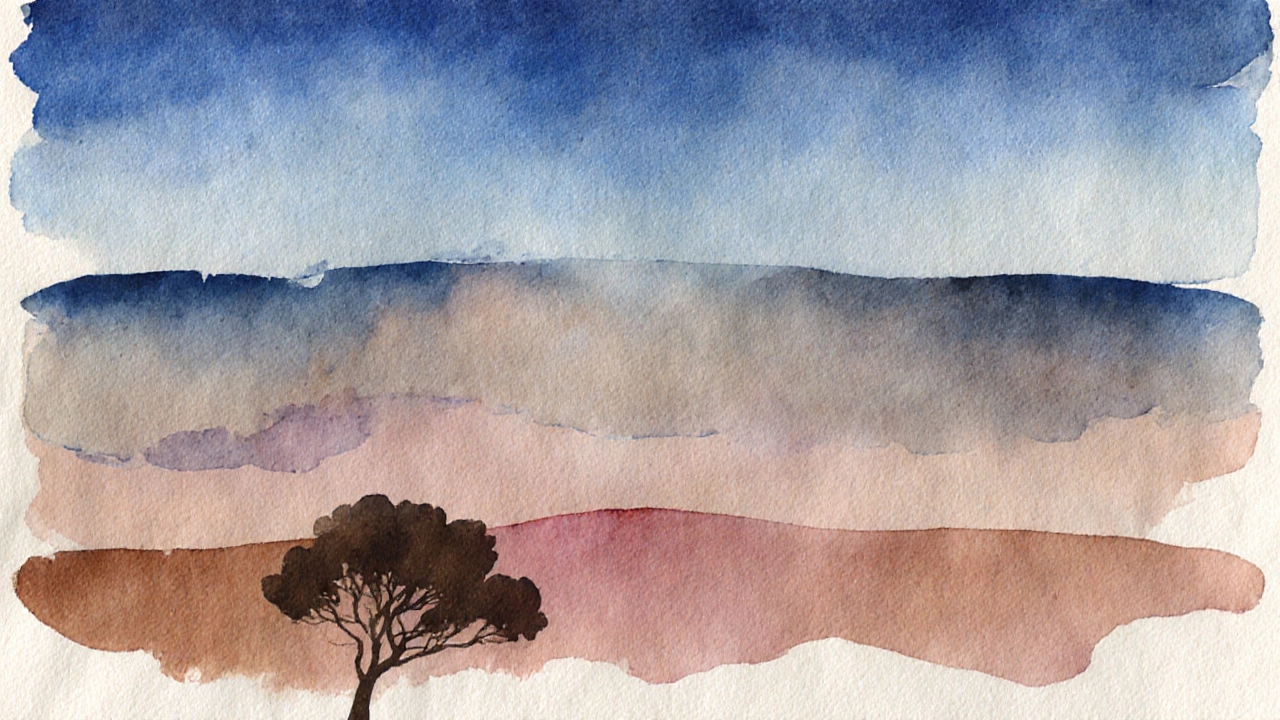
Common Layering Mistakes (and How to Fix Them)
- Muddy colors: This happens when you layer too many opaque pigments or don’t let layers dry. Solution: Stick to transparent colors for early layers. Save opaque ones for final accents.
- Overworking: You keep going back to a spot, scrubbing it, trying to fix it. That lifts pigment and tears the paper. Solution: Accept imperfections. Watercolor thrives on spontaneity. If you need a stronger color, wait and add a new layer.
- Hard edges where you don’t want them: You painted a dark shadow over a light wash, and now there’s a sharp line. That’s not always bad-but if it’s unintentional, it’s because the paper wasn’t dry enough. Solution: Let it dry longer, or use a damp brush to soften the edge gently.
- Paint lifting: You try to paint over a dried layer, and the old paint starts to come off. That’s usually because the paper is low quality or you’re using a stiff brush. Solution: Use 100% cotton paper (like Arches or Saunders Waterford) and soft, round brushes.
What Pigments Layer Best?
Not all watercolors behave the same. Here’s a quick guide:| Pigment Name | Transparency | Staining? | Layering Suitability |
|---|---|---|---|
| Quinacridone Rose | Transparent | Yes | Excellent-builds intensity without muddying |
| Hansa Yellow Light | Transparent | No | Great for glazing-won’t overpower layers |
| Burnt Umber | Transparent | Yes | Perfect for shadows-layer it 3-4 times for depth |
| Cadmium Yellow | Opaque | No | Use sparingly-best for final touches |
| Payne’s Gray | Transparent | Yes | Use for darkening without killing luminosity |
Keep a small swatch chart of your paints. Test how they layer on your paper. It takes 10 minutes, but it saves you hours of ruined paintings.
Layering for Realistic Effects
You don’t need to layer every part of your painting. Use it where it matters:- Shadows: Build them in 2-3 thin layers. Start light, then add depth. A shadow isn’t just one color-it’s a mix of blue, purple, and brown. Layer them one at a time.
- Leaves and foliage: Don’t paint every leaf. Paint the dark areas first, then glaze over with a lighter green. Let the paper show through for highlights.
- Skin tones: Start with a pale yellow wash, then add a hint of rose, then a touch of blue-gray for shadows. Each layer adds realism without looking painted.
- Water reflections: Paint the object first, then let it dry. Then paint the reflection with a slightly lighter, softer wash. The layering creates the illusion of depth and movement.
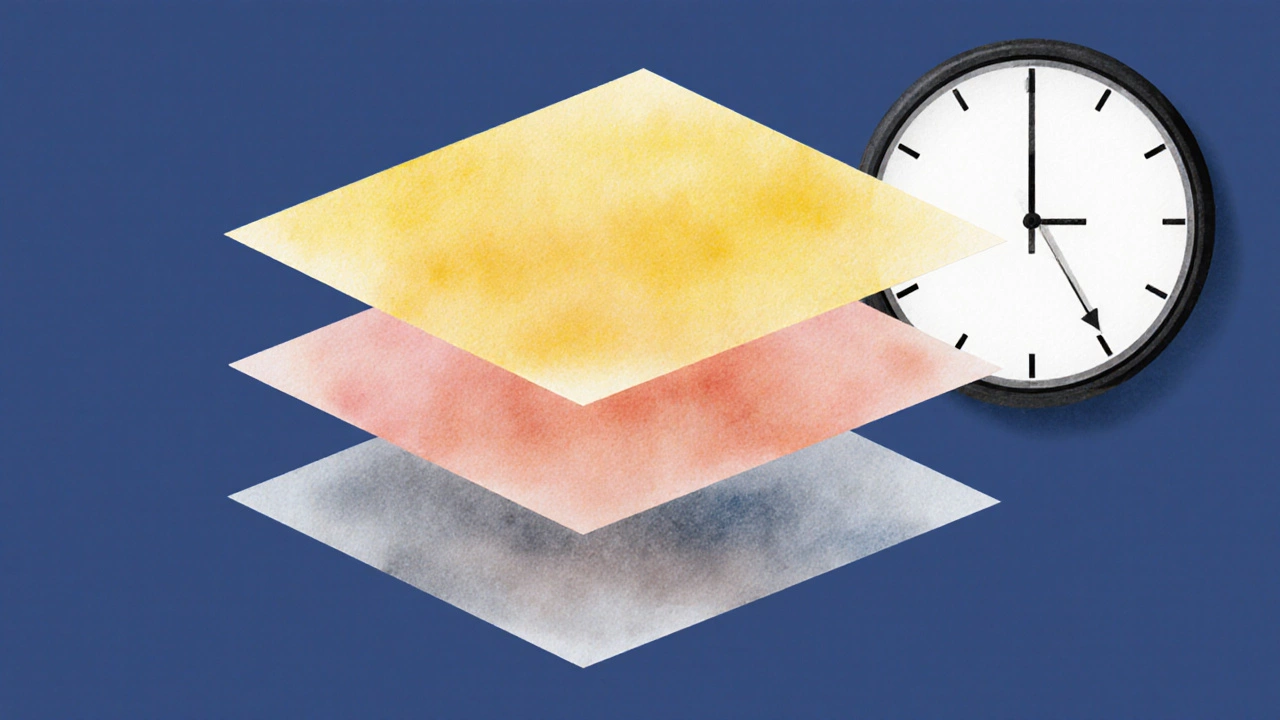
What to Avoid
- Don’t use white paint. Let the paper be your white. That’s the whole point of watercolor.
- Don’t rush. Let each layer dry. Seriously. Wait.
- Don’t try to fix mistakes by scrubbing. Lift color with a damp brush, then let it dry before reapplying.
- Don’t assume more layers = better. Sometimes one perfect wash is all you need.
Practice Exercise: The Simple Leaf
Try this to get comfortable with layering:- Paint a light wash of yellow-green over a leaf shape. Let it dry completely.
- Paint a slightly darker green along the center vein and edges. Let it dry.
- Add a touch of burnt sienna in the darkest areas. Let it dry.
- Use a clean, damp brush to soften any hard edges.
- Let the paper’s white show through for highlights.
That’s it. Four layers. One leaf. No mud. No frustration. Just quiet, controlled progress.
Final Thought: Layering Is Patience
Watercolor isn’t about speed. It’s about listening to the paint. It’s about waiting. It’s about trusting that each thin layer adds something real. You don’t need to cover everything. You just need to build it slowly, respectfully, one wash at a time.Are you supposed to layer watercolor? Yes-if you want depth, richness, and life in your paintings. But layering isn’t about forcing color on color. It’s about letting each layer breathe. And that’s where the magic happens.
Can you layer watercolor without waiting for it to dry?
Technically, yes-but you’re not layering anymore. You’re blending. If you paint over wet paint, the colors mix unpredictably, creating blooms or soft edges. That’s fine for skies or abstract effects, but not for building controlled depth. For true layering, always wait until the paper is completely dry.
Why does my watercolor look muddy?
Muddy colors usually come from overworking, using too many opaque pigments, or painting over damp layers. Transparent pigments like Quinacridone or Ultramarine blend cleanly. Opaque ones like Cadmiums turn chalky when layered. Let each layer dry fully, limit your pigment choices, and avoid scrubbing.
How many layers can watercolor paper handle?
High-quality 100% cotton paper (like Arches or Saunders Waterford) can handle 10 or more layers without tearing. Lower-quality paper (like student-grade or wood pulp) starts to pill after 3-4 layers. Always use the best paper you can afford-especially if you plan to layer.
Do I need to use the same brush for every layer?
No-but you must clean your brush between layers, especially when switching from dark to light colors. A dirty brush will carry pigment into your next wash and ruin the clarity. Rinse thoroughly and blot on a towel before starting a new layer.
Can you layer watercolor with acrylic or gouache?
Yes, but it changes the nature of the painting. Gouache is opaque and can cover watercolor layers, so it’s good for final highlights or corrections. Acrylics dry waterproof and can be painted over watercolor, but they lose the luminous quality watercolor is known for. Use them sparingly and only if you’re going for a mixed-media look.
